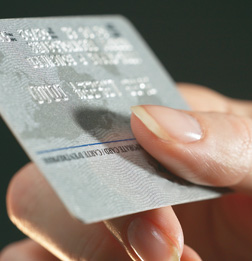Last year, current account fraud surged, according to a credit checking firm; and it is still the most targeted financial product. The fraud rate in current account applications soared last year from 73 in every 10,000 applications in January to 156 in every 10,000 applications in December, says Experian.
Current account fraud not only presents the immediate threat of emptying a person’s overdraft facilities, but also often acts as a ‘gateway’ to further fraudulent activity, the credit checkers warn. Fraudsters can use information gained from a successful attempt to then open other financial products such as loans or credit cards.
The increase in current account fraud has also been a factor in tipping the overall balance between first party fraud and identity fraud, according to the firm. At the start of 2015, 51 per cent of detected and prevented fraudulent applications across all financial products were attributed to first party fraud whilst 49 per cent were a result of identity (third party) fraud. By the end of the year this balance tipped significantly, with 59 per cent of fraud now accountable to identity thieves.
Nick Mothershaw at Experian, says: “Current account fraud really came to the fore in 2015, with identity thieves acting as the chief culprits. The positive side to this is that these numbers represent detected and prevented fraud attempts, demonstrating the robustness of the protection systems in place for financial products. While it is clear that the systems are working, both companies and consumers need to remain vigilant to the evolving tactics of fraudsters which become more sophisticated with each passing day.”
What can people do to prevent being victims of ID fraud?
1. Always shred or destroy documents that contain personal information before throwing them away.
2. Never respond to cold phone calls or e-mails asking for account details, PINs, passwords or personal information.
3. Don’t give too much away on networking websites. For example, pets’ names or children’s names could be used as passwords.
4. Register to vote at your current address. If you don’t, thieves could use your previous address details to open new credit accounts, and run up debts in your name.
5. Monitor your post regularly so you know when to expect important documents — and when to act if they don’t arrive.
6. Redirect your mail via the Post Office if you move house.
7. Always use secure, unique passwords for as many online accounts as possible, and ideally all of them. At the very least have a unique password for each type of service provider such as financial services, retail services and email.
8. Don’t store account names and passwords on your smartphone, either in email, as a note, or to ‘autocomplete’ when you open a website or app. It will be a goldmine for fraudsters if your device is lost or stolen.
9. Read all bank and card statements regularly to check for suspicious transactions.
10. Check your credit report, because it lists your credit accounts and what you owe, so you can spot applications and spending that are nothing to do with you.
Comment
Rob Norris, Director of Enterprise and Cyber Security in UK and Ireland at Fujitsu, said: “The fact that the rate of fraudulent current account applications has more than doubled over the last year should come as no surprise – criminals seek money, consumers have it, and personal details are the online route to it. Cyber criminals are entrepreneurial, well-resourced and technically able, and as such everyone should be doing more to prevent theft. According to research from Fujitsu, only 9pc of consumers believe British organisations are doing enough to protect their data.
“Because of this, it’s vital both consumers and organisations take a proactive approach when it comes to security. Organisations need to focus on the integration of threat intelligence and other information sources to provide the context necessary to deal with today’s advanced cyber threats. There must also be a clear and well-rehearsed crisis management plan for a breach, addressing internal and external communication. As well as this, consumers need to ensure they use different passwords for different applications and are aware of the security risks when using payment information.
“As the sophistication and regularity of security attacks continue to increase, it has never been more important for both consumers and organisations to protect their data appropriately. This is particularly important within the financial services sector, due to the amount of personal data and highly confidential information that is at risk of falling into the wrong hands.”










